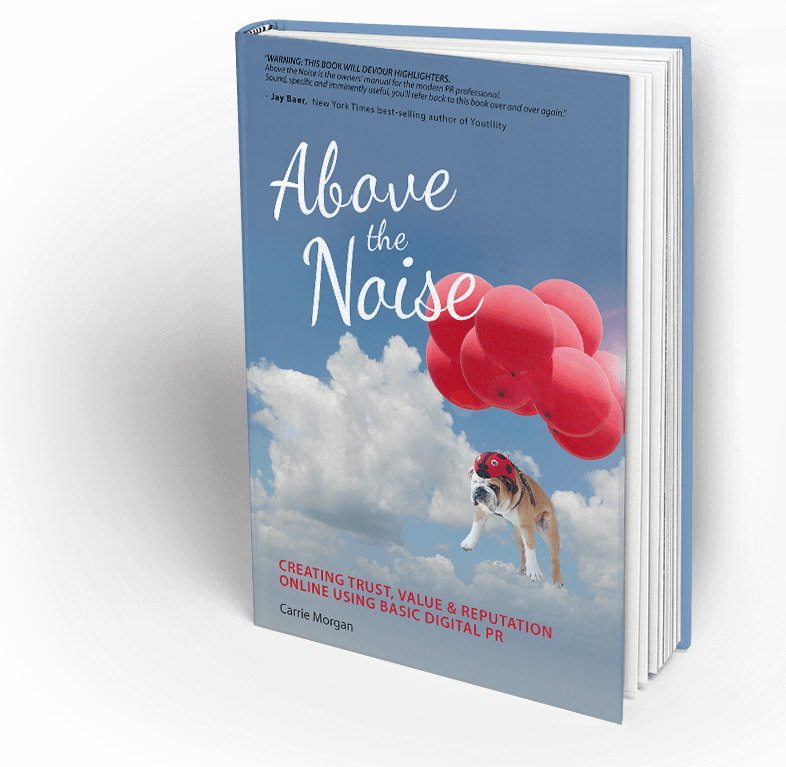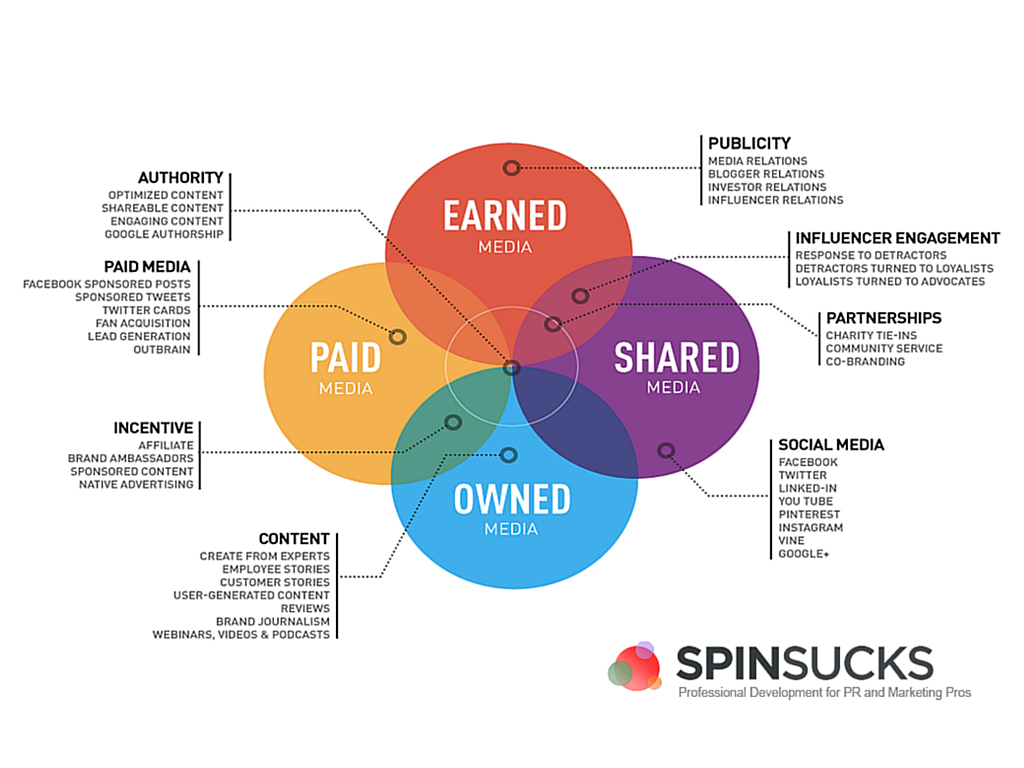Last month, Carrie Morgan—a communicator and content marketer out of Arizona—published a book called Above The Noise.
The book targets business owners and entry- to mid-level marketing professionals, and it details how to build an online presence.
It helps to build clarity of messaging, positioning, and target audience—then how to use that clarity to create trust, value and reputation.
Who doesn’t want to rise above the noise online, right?
She asked me if I would write the foreword to the book and so I sat down to read it.
It’s a good book about the things I describe above and it tells great stories about Carrie. There is one particular story she tells about a house she lived in as a child that will always stick with me.
The writing is so detailed, I can exactly picture the house, her bedroom, and even the toys and books she might have had.
I know that really has nothing to do with PR, but it’s a great lesson in how communicators can use storytelling to engage an audience and have staying power.
Unfortunately, I couldn’t write a foreword about that, but here is what I did write.
Above The Noise Foreword
The times…they are a’ changin.
That is one thing you can always be certain of, from sliced bread and the advent of automobiles to changing technologies and self-driving cars.
But it’s not something the PR industry counted on. You see, the industry was pretty stagnant for 50 years or more. In fact, it wasn’t until 2012 that PR was redefined, thirty years after the previous definition.
There was no need. Nothing had changed. PR was known for its ability to get organizations or executives out of hot water, gain publicity, “spin” the news to get better coverage, help in a crisis, and manage reputations. You knew if you had good PR…and also if you had bad PR, but here wasn’t a way to measure effectiveness of it to business results or to use it generate revenue.
Until now.
With the advent of social media, companies becoming publishers, and data, all of that has changed. We now have lots and lots of data and can, as Mitch Joel—the author of Ctl Alt Delete—says, “Have sex with Big Data.”
Data allows us to make very educated decisions and to combine science with art, which makes you love it so much you want to have sex with it. It shows us which PR tactics work, which ones to abandon, and which ones to improve. It allows us to see how effective a PR campaign is and how much revenue it is generating for the organization. It allows us to see if PR is generating leads, how well it is nurturing those leads, and whether it helps prospects make the decision to buy.
It used to be that you would plan your PR campaign in Q4 for the following year. You’d spend the entire year executing it and then you’d review all of the stories it generated, determine an impressions and advertising equivalency, and report back on its “success.” If you were really lucky, the organization you worked for had a six figure budget to do a brand awareness study so you’d start that in January of the following year and review the results in June. Eighteen months after you began the campaign—and nearly two years after you created the plan—you’d know whether or not it worked to increase awareness and market share.
Today that is archaic.
Yet, it’s still how many organizations run their PR campaigns. It’s the way it’s always been done and people fear change. Particularly change that requires them to learn new skills.
The change, however, is a good one. For all of us. For the PR industry. For business leaders. For PR professionals working tirelessly to show they are an investment—not an expense—to the organization.
The PESO Model
When I wrote Spin Sucks:Communication and Reputation Management in the Digital Age, I introduced the PESO model: Paid, earned, shared, and owned media.
You can see that the four media types work together to also create influencer engagement, partnerships, incentive programs, and—arguably, most importantly—authority.
With that authority comes thought leadership, market share, and increased brand awareness. Google understands you are an expert in your field and rewards you with first page search results. Your competitors understand you are a leader and refer business to you when it’s something they can’t take on. Your customers understand you are the industry’s expert and continue to not only buy from you, but refer others to you. And prospective candidates understand you are the best and clamor to work with you.
But this also causes a great challenge, both for marketing and for business. For as long as most of us have been in business, communications has been about polished and canned messages, of pushing those messages out to our different audiences, and of one-way—and completely self-serving—conversations.
Now we have a huge opportunity to have one-on-one conversations with our customers, even if there are thousands of them. We have become our own publishers. We don’t have to rely on third-party influencers (though it’s always nice to have) to tell our stories. We can even contribute content to top-tier media outlets without the help of a middle man (aka a PR professional).
But many organizations use these new tools not in ways as described above, but in the traditional way of pushing a message. And it doesn’t work. So marketers and business leaders get frustrated. They can’t figure out how to measure its effectiveness and it seems like a big time and resource suck.
Then is all abandoned.
If you change your thinking from push to pull, begin to have two-way conversations, really listen to the feedback (even the hurtful kind) you get, and provide valuable information that is helpful to your customer, your prospect, and the industry, you will end up exactly where you set out to be: An authority your industry and an expert everyone wants to work with.
It’s time to embrace change, use the tools available in non-traditional ways, and stay above the noise.
More About the Book
Above The Noise is based on digital public relations tactics to grow your Internet marketing skills, resulting in more online visibility and influence. It will help you launch an integrated mix of basic content marketing, social media, and search engine optimization.
You’ll learn how to:
- Have stronger brand clarity and build the benefits and audience appeal of your product or service so others understand it and flock to it.
- Define a niche you can influence and dominate.
- Create consistent messaging wrapped into every aspect of your online presence.
- Learn the importance of monitoring and creating trust signals.
- Form a habit of content creation.
- Integrate basic SEO tactics for your website, blog, and social media.
- Amplify visibility through fast, easy images and repurposed content.
- Curate content on social media to show expertise and provide value.
- Be more authentic, to build a loyal audience.
- Join conversations that fit your audience/brand.
It’s not just about building visibility.
It’s about building visibility with the right audiences most likely to buy your product or service, while building trust and influence that reinforces their decision.
It’s about rising above your competitors to stand out, like an unstoppable force of nature.
Above The Noise will help those who have learned the basics of content marketing, SEO, and social media, but struggle to form a united, integrated approach that drives actual results and revenue.

